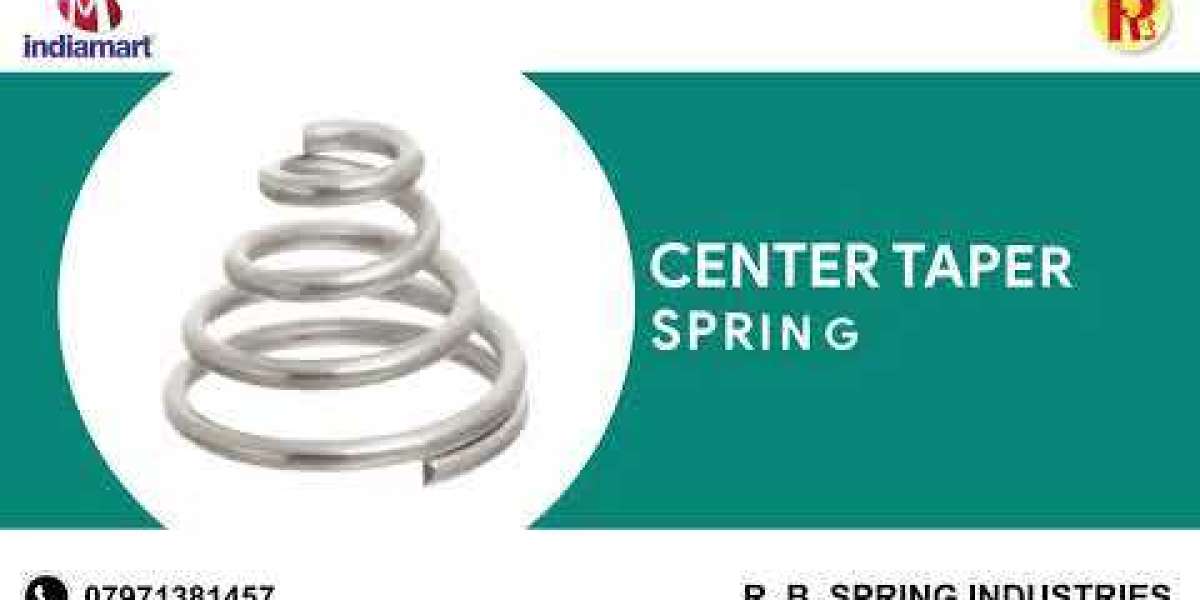At first glance, it might appear as though all of the different kinds of springs are fundamentally the same. However, in reality, there are many different types of spring designs, and each of these designs has a unique set of properties that are determined by the function that the spring is intended to fulfill. In other words, the function that the spring is intended to fulfill determines the properties that are possessed by the spring. To put it another way, the characteristics of the spring are based entirely on the role that it is supposed to play in the system. Compression springs and die springs are two distinct types of springs that are often confused with one another because of their similarities. However, there are significant distinctions between the two types of springs.
Compression springs are, without a doubt, the most common type of spring found in homes and businesses. You have a lot of different options to pick from when it comes to springs. Their primary role is to defend against the application of compressive force by performing the function of a barrier. The application of pressure causes a shortening of their overall length, which, in turn, leads to the storage of mechanical energy as the substance is compressed even further. Compression springs can be found in a huge variety of products, ranging from clothes pins to electronic devices. These springs are used to compress the material they are wound around. The typical material that is utilized in the production of these springs is steel.
Die springs are of the high force compression spring variety, which distinguishes them from the majority of other compression springs, which are of the low force compression spring manufacturer variety. The majority of other compression springs are of the low force compression spring variety. Die springs are ideally suited for use in applications that require high loads or that operate under extreme conditions, such as high temperatures, as they are designed to consistently deliver a predetermined pressure at a given compression. This makes them an excellent choice for use in applications that require high loads. As a result, they are an excellent option for use in applications that demand high loads due to the fact that they can withstand such loads. Die springs are a common component that are used in a variety of automotive applications in addition to the construction of heavy machinery. Die springs are also used in the construction of other types of machinery. They are very effective at exerting a high force in a restricted space, which makes them a good option for applications that call for this kind of force to be applied. This makes them an excellent choice.
Does the fact that die springs are significantly more durable than the vast majority of compression springs imply that it is always preferable to go with die springs rather than compression springs when making a purchase decision? Absolutely not in each and every one of the situations. Because some of the products and assemblies that use springs require lighter weight and less bulk, the heavy duty construction of die springs is not as conducive as it once was. This is because some of the products and assemblies that use springs require lighter weight and less bulk. This is due to the fact that certain products and assemblies that utilize springs call for a lighter weight and less bulk than normal. When it comes to compression springs and die springs, the ultimate use of the spring as well as the environment in which it will function determines the choice of material, wire diameter, and other variables that can be adjusted. This holds true whether the spring is being used for compression or as a die, regardless of the context.
Die Springs are a specialized form of compression spring that are capable of performing actions that are physically impossible for human beings to carry out.
It's possible that compression springs are the most common type of spring, but extension springs are also very common in many applications. Their primary role is to defend against the application of compressive force by performing the function of a barrier. The application of pressure causes a shortening of their overall length, which, in turn, leads to the storage of mechanical energy as the substance is compressed even further. Compression springs have a multitude of applications in the manufacturing industry and can be found in a wide range of products, from pens to electronic devices and everything in between. Their applications can range from being very straightforward to extremely complicated. It is common practice to turn to the "Superman" of compression springs, also known as the die spring, whenever an application has specific requirements for an increased level of force. This type of spring is known as a compression spring. This is due to the fact that the die spring is a type of compression spring that is the most powerful.
Die springs are a specific type of compression spring that are designed to exert a significant amount of force when they are compressed. They are constructed from wire that has been formed into a rectangular shape, and they are designed to be compressed. Die springs are distinguishable from other kinds of compression springs due to the use of a rectangular wire structure in their construction. Die springs are put to use in applications that require the handling of high loads or conditions that are particularly severe, such as high temperatures. Other conditions that call for the use of die springs include low loads and low temperatures. Because they are constructed to deliver a pressure that is predetermined consistently at a given compression, they can be utilized in circumstances similar to those described above. Die springs are a reliable option for applications that require a high force to be applied within a confined space, such as in the case of die presses. This type of application is common in industries such as aerospace and automotive. As a result of their adaptability, die presses that are utilized in the production of automotive components or the assembly of heavy machinery frequently make use of them.
Die springs might have a higher strength than other kinds of compression springs, but that does not mean that they are the superior option in every circumstance simply because they are one of the available options
(Even Superman was aware that there were times when it was best to maintain the persona of Clark Kent when dealing with certain situations
)Because of the sturdy nature of its construction, a die spring cannot withstand the same level of compression as a conventional compression die spring manufacturer could in the event that it were subjected to the same conditions
Because of this, a die is probably not the best choice for an application that requires a significant amount of travel because of the limited range of motion it offers
Another problem with die springs is that they are rarely manufactured to the exact specifications provided by the customer
This is another issue with die springs
Most of the time, they are manufactured as stock springs with the intention of fitting standard hole and rod specifications
This is the case the majority of the time
This is the case in virtually all of the situations
springs can be very expensive to custom make a die spring if it will not fit in an application; as a result, it is preferable to use a regular compression spring instead of making a custom spring for the application rather than spending the time and money necessary to make a custom spring
It is not to one's advantage to have die springs that are less heavy-duty despite the fact that they are constructed to be heavy-duty for the reasons that have been mentioned above. When deciding whether or not to use a die spring, it is important to take into consideration not only the ultimate purpose of the spring but also the conditions under which it will be used. This is because the ultimate purpose of the spring is dependent on the conditions under which it will be used.
Because we are a manufacturer of springs with a great deal of experience, we are able to provide you with assistance in selecting the spring design that is most appropriate for your specific application as well as the material that should be used to make that spring. This assistance is offered both in terms of the design of the spring and the material that should be used to make that spring. Because we are well aware of how important it is to make sure that the right kind of spring is used for the job at hand, the team that we've assembled has made it a top priority to work on refining the design of the spring. Please do not hesitate to get in touch with us at your earliest convenience so that we may discuss your project.









